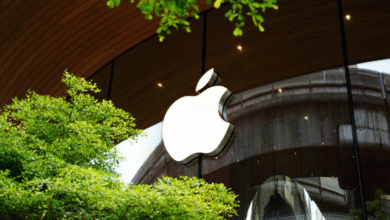Artificial Dyes Phase Out: What It Means for Snacks

The FDA’s recent decision to phase out artificial dyes marks a significant shift in the food industry, affecting popular snacks like Flamin’ Hot Cheetos and Skittles. This policy change aims to eliminate petroleum-based synthetic dyes from the American food supply by the end of next year, as health concerns over these additives come to the forefront. Notably, the use of synthetic colorants, often derived from petrochemicals, has faced mounting criticism over potential health risks, particularly for children. With the FDA advocating for natural color alternatives, food giants like PepsiCo and General Mills will need to reformulate their products to ensure compliance with these new regulations. As the transition progresses, consumers can expect to see a movement towards healthier, naturally-colored foods that prioritize long-term food safety.
The ongoing campaign to eliminate synthetic food colorants represents a vital transformation in how we perceive food additives in our consumption patterns. This initiative, spearheaded by the FDA, seeks to phase out synthetic dyes, which have been utilized for decades to enhance the vibrancy of snacks and beverages like Mountain Dew and Skittles. Health advocacy groups and parents alike have long called for a shift towards safer, natural color solutions, reflecting a growing awareness of the potential side effects of artificial additives. In response to these demands, companies are exploring options such as beet juice and turmeric to achieve the desired hues while ensuring product transparency and safety. This movement not only aims to improve public health but also to reshape the food landscape towards more sustainable practices.
The FDA’s Plan to Phase Out Artificial Dyes
The FDA’s announcement to phase out artificial dyes marks a significant shift in food and beverage regulations in the United States. This policy, aimed for completion by the end of next year, emphasizes the agency’s commitment to improving food safety and addressing consumer concerns about the health impacts of synthetic additives. With companies like PepsiCo and General Mills preparing to adjust their product lines, this move signals a broader trend towards natural color alternatives in the food industry.
FDA Commissioner Marty Makary addressed public health implications during this announcement, emphasizing the correlation between artificial colors and health issues such as hyperactivity in children. As the FDA works towards eliminating synthetic dyes like Red Dye 40 and Yellow Dye 5, it sets a precedent allowing food companies to explore natural color alternatives. This transition represents both a challenge and an opportunity for manufacturers to innovate while fostering consumer trust.
The Impact on Popular Snacks: Flamin’ Hot Cheetos and Skittles
Flamin’ Hot Cheetos and Skittles, two fan-favorite snacks, will face significant changes as artificial dyes are phased out. The iconic flavors and vibrant colors that attract consumers are largely due to petroleum-based synthetic dyes, whose removal may alter the appearance and potentially the taste of these products. As companies adapt their recipes, consumers may notice a difference in the visual presentation of their beloved snacks.
As the FDA enforces the transition away from artificial dyes, brands will likely turn to other natural colorants, such as beet juice, to maintain a vibrant appearance. This shift raises questions about consumer acceptance—will fans of Flamin’ Hot Cheetos still enjoy the same fiery flavor without its signature coloring? The success of this change hinges on companies’ ability to effectively communicate the benefits of natural color alternatives while retaining product appeal.
Potential health benefits of eliminating artificial dyes are becoming increasingly evident, especially for families who are concerned about their children’s nutrition. The FDA’s proactive stance aligns with growing public interest in clean eating and awareness regarding food safety.
There is no doubt that transitioning from artificial to natural colors could influence consumer trends significantly. For brands like Skittles and Flamin’ Hot Cheetos, finding the right formula to balance appeal and health may ultimately redefine snack industry standards.
Natural Color Alternatives: A Sustainable Future for Food Industry
With the FDA’s initiative to phase out artificial dyes, there is a renewed focus on natural color alternatives that can replace synthetic options in food products. Natural colorants derived from plant-based sources not only present a safer option but also align with today’s consumer demand for transparency and health-conscious choices. Ingredients like beet juice and turmeric can serve as excellent substitutes, providing a spectrum of colors while enhancing the nutritional profile of products.
Expanding the palette of natural additives opens up innovative possibilities for food manufacturers, encouraging the industry to be more creative in formulation. As companies strive to meet compliance with the FDA’s phase-out, they may invest in research and development of more effective plant-based dyes, which presents an opportunity for a green revolution in the food sector. The future appears to be moving towards a food landscape enriched by naturally sourced ingredients.
Challenges of Reformulating Products Without Synthetic Dyes
One of the key challenges food companies face while reformulating products without artificial dyes is maintaining the desired aesthetic and taste. Natural color alternatives can differ significantly in intensity, stability, and behavior during processing compared to their synthetic counterparts. Companies must navigate this tricky formulation process while ensuring that the final product remains appealing to consumers familiar with bright, vibrant colors.
Additionally, cost can be a significant factor. Synthetic dyes are generally cheaper than their natural counterparts, which may require larger quantities for similar effects. This could result in higher production costs, raising questions about pricing and profitability. Manufacturers must strike a balance between offering appealing products and remaining competitive in a market that increasingly values health and safety.
Consumer Reactions to Phasing Out Artificial Dyes
Consumer reactions to the FDA’s phase-out of artificial dyes have been overwhelmingly positive, particularly among health-conscious parents seeking safer options for their children. This initiative resonates with a growing movement advocating for clean labels and transparency in food ingredients. As public awareness of the potential risks associated with synthetic dyes increases, the desire for products that prioritize health and well-being will only strengthen.
However, there may also be skepticism regarding whether companies can effectively implement these changes without sacrificing flavor or increasing costs. Many consumers will be watching closely, ready to respond to any perceived decline in quality or increase in prices. It’s essential for brands to communicate effectively with their customer base to reassure them that transitioning to natural color alternatives need not compromise their product experience.
The Role of the USDA in Transitioning to Natural Colors
The U.S. Department of Agriculture (USDA) may play a crucial role in supporting the transition to natural colors as the FDA phases out artificial dyes. With the increasing popularity of organic and natural food products, the USDA can facilitate the identification and certification of safe, plant-based color sources. This support could help manufacturers implement changes more smoothly and encourage the growth of sustainable agricultural practices.
Additionally, the USDA can aid in developing best practices for sourcing and using natural colorants. Educating food companies on effective methods for reformulating products may lead to a quicker and more efficient transition, ultimately benefiting both producers and consumers. As federal agencies collaborate on these initiatives, the emphasis on a healthier food supply could prompt further advancements in the food industry.
Legislation Trends: How the FDA’s Move Reflects a Healthier Food Agenda
The FDA’s decision to phase out artificial dyes is indicative of larger legislative trends prioritizing public health and food safety. By taking this proactive stance, the agency aims to address growing consumer concerns over the safety of synthetic additives in the food supply. This movement ties into broader health initiatives that advocate for nutritious foods, a necessary approach given the chronic disease epidemic in the nation.
As this transition unfolds, it is likely that we will see similar regulations regarding other synthetic additives. The FDA’s initiative reflects a shift towards more comprehensive regulations that seek to protect public health, demonstrating that the agency is willing to take substantial actions for the welfare of American consumers. This evolving landscape may further push food manufacturers to innovate and adapt to an increasingly health-focused industry.
Market Response: How Brands Are Adapting to Consumer Preferences
In response to the FDA’s phase-out of synthetic dyes, numerous brands are already taking proactive steps to adapt their products to new regulations and consumer demands. Many manufacturers are experimenting with natural color sources, seeking ways to maintain their products’ appeal while meeting the new safety standards. Companies like Kraft Heinz, previously pressured to use natural alternatives, are now well-positioned to capitalize on this trend and regain consumer trust.
Brands that successfully reformulate by integrating natural color options may emerge as leaders in a transforming market. This adaptation not only fosters loyalty from health-conscious consumers but also aligns business strategies with a more sustainable future. As consumer preferences continue to shift towards healthier options, foods incorporating natural colors are likely to gain a competitive edge.
The Future of Food Coloring: Trends and Innovations
Looking ahead, the landscape of food coloring is set to undergo transformative changes as companies innovate in response to regulatory pressures and consumer preferences. The demand for natural color alternatives is fuelling the emergence of new products derived from fruits, vegetables, and spices. This trend will likely lead to a diversification of options in food coloring, making it possible to enhance not just appearance, but also nutritional value.
As innovation accelerates, we can anticipate an influx of new studies examining the efficacy of natural colorants compared to synthetic dyes. This research could help further validate the quality and reliability of plant-based alternatives, supporting the shift in regulation. Ultimately, the future of food coloring will be shaped by a balance of health, safety, and enhanced sensory experiences for consumers.
Frequently Asked Questions
What does the FDA’s artificial dyes phase out mean for popular snacks like Flamin’ Hot Cheetos and Skittles?
The FDA’s artificial dyes phase out indicates that popular snacks such as Flamin’ Hot Cheetos and Skittles will no longer contain synthetic dyes by the end of next year. This decision aims to replace petroleum-based synthetic colorants with natural color alternatives, addressing longstanding health concerns associated with these artificial additives.
How will food companies like PepsiCo adapt to the artificial dyes phase out mandated by the FDA?
Food companies like PepsiCo will need to reformulate their products to comply with the FDA’s artificial dyes phase out. This includes sourcing natural color alternatives to replace synthetic dyes, which may initially increase production costs but aim to maintain consumer satisfaction and product appeal.
What are some natural color alternatives suggested by the FDA for replacing synthetic dyes?
The FDA has suggested several natural color alternatives for replacing synthetic dyes during the phase out, including watermelon juice, beet juice, and potentially others. These alternatives are intended to maintain the visual appeal of products while eliminating petroleum-based synthetic food dyes.
Why is the FDA phasing out artificial dyes used in foods like Skittles and Flamin’ Hot Cheetos?
The FDA is phasing out artificial dyes due to health concerns, particularly their association with increased hyperactivity in children. The shift aims to promote food safety by eliminating petroleum-based synthetic dyes from the U.S. food supply and transitioning to natural color alternatives.
How does the FDA’s artificial dyes phase out impact consumers regarding food safety and product labeling?
As the FDA’s artificial dyes phase out is implemented, consumers can expect improved food safety through the removal of synthetic dyes, leading to clearer and potentially healthier product labeling that reflects the use of natural color alternatives.
What prompted the FDA to take action on the phase out of artificial dyes in food?
The FDA’s decision to phase out artificial dyes was prompted by years of consumer backlash and growing health concerns regarding synthetic dyes in food products. This policy change reflects a broader effort to enhance food safety and the health of American children.
When will the FDA officially remove synthetic dyes from the market?
The FDA plans to officially remove all remaining synthetic dyes, including widely used variants like red dye 40 and yellow dye 5, by the end of next year as part of their artificial dyes phase out initiative.
Will prices increase for products like Flamin’ Hot Cheetos and Skittles due to the artificial dyes phase out?
The FDA has indicated that transitioning to natural alternatives in products like Flamin’ Hot Cheetos and Skittles should not lead to price increases as experienced in other countries, although costs may vary due to the need for larger quantities of natural colors.
What is the timeline for phasing out artificial dyes according to the FDA’s new policy?
The timeline for phasing out artificial dyes, according to the FDA’s policy, is set for completion by the end of next year, which includes expediting the elimination of specific synthetic dyes and encouraging companies to adopt natural color alternatives.
What has been the historical reaction from consumers regarding artificial dyes in food?
Historically, consumer reaction to artificial dyes in food has been increasingly negative, leading major brands like Kraft Heinz to reformulate recipes. Consumer demand for products without artificial dyes has prompted companies to seek cleaner, more natural options.
| Key Point | Details |
|---|---|
| FDA Phase Out Date | End of next year (2026) |
| Companies Affected | PepsiCo, General Mills, Mars, WK Kellogg |
| Reason for Phase Out | To eliminate synthetic chemicals from food; public backlash against artificial colors |
| Dyes Being Eliminated | Red dye 40, yellow dye 5, yellow dye 6, blue dye 1, blue dye 2, green dye 2 |
| Alternatives Suggested | Natural colors like watermelon juice and beet juice |
| Potential Impact | Recipe changes and consumer perception may shift; no price increase expected |
| Regulatory Approach | No formal agreement with companies yet, but an ‘understanding’ exists |
| Political Context | Initiative emphasized by the Trump administration; part of broader health reforms |
Summary
The artificial dyes phase out is a significant move by the FDA signaling a shift towards healthier food options in the United States. By removing synthetic dyes from food products, the agency aims to protect children from harmful chemicals and promote the use of natural ingredients. As top food companies are prompted to reformulate their products by the end of next year, this initiative reflects a growing commitment to addressing public health concerns related to food additives. With support from health officials, the elimination of artificial dyes promises to reshape the landscape of food manufacturing and consumer preferences for a healthier future.




